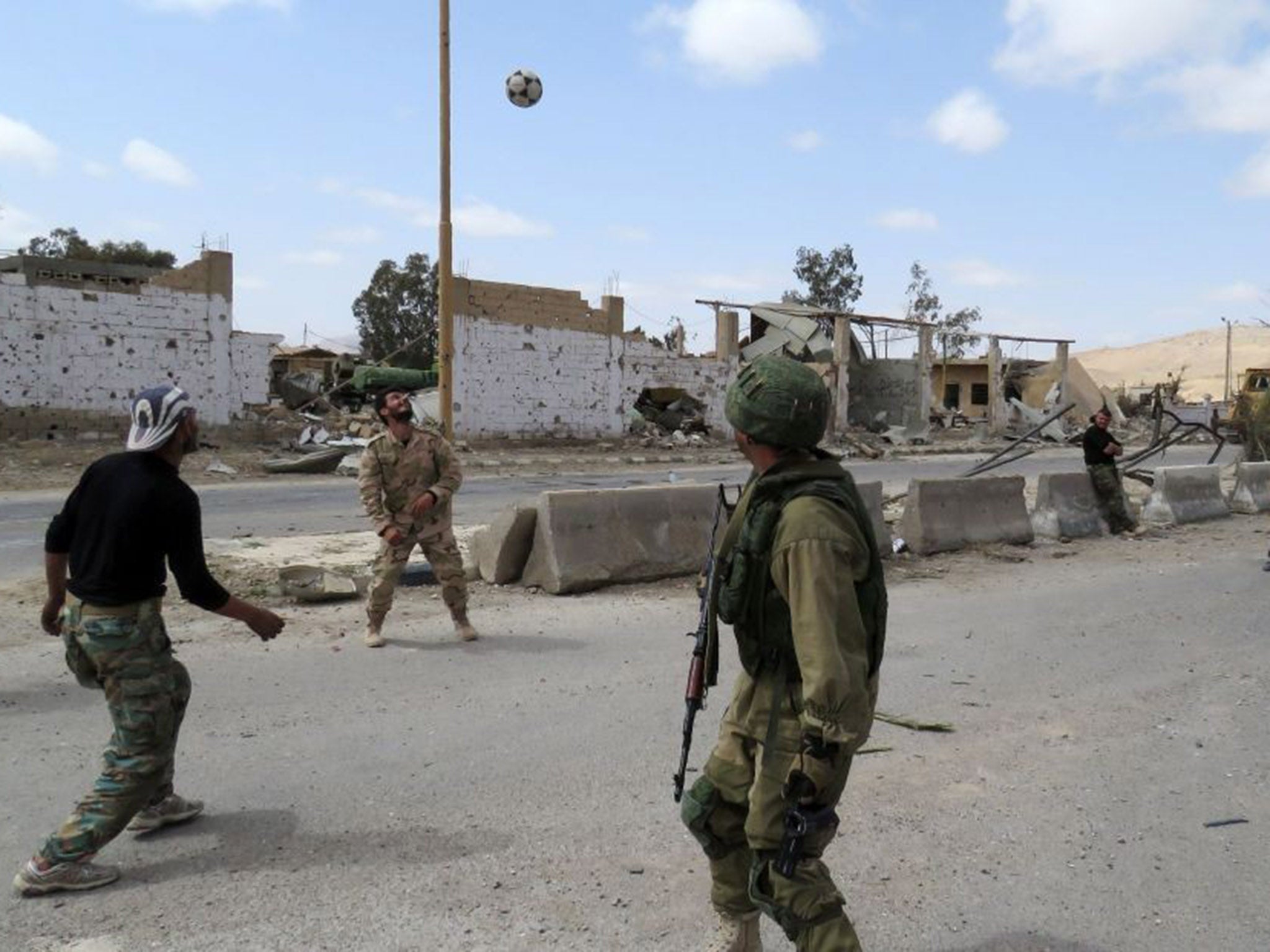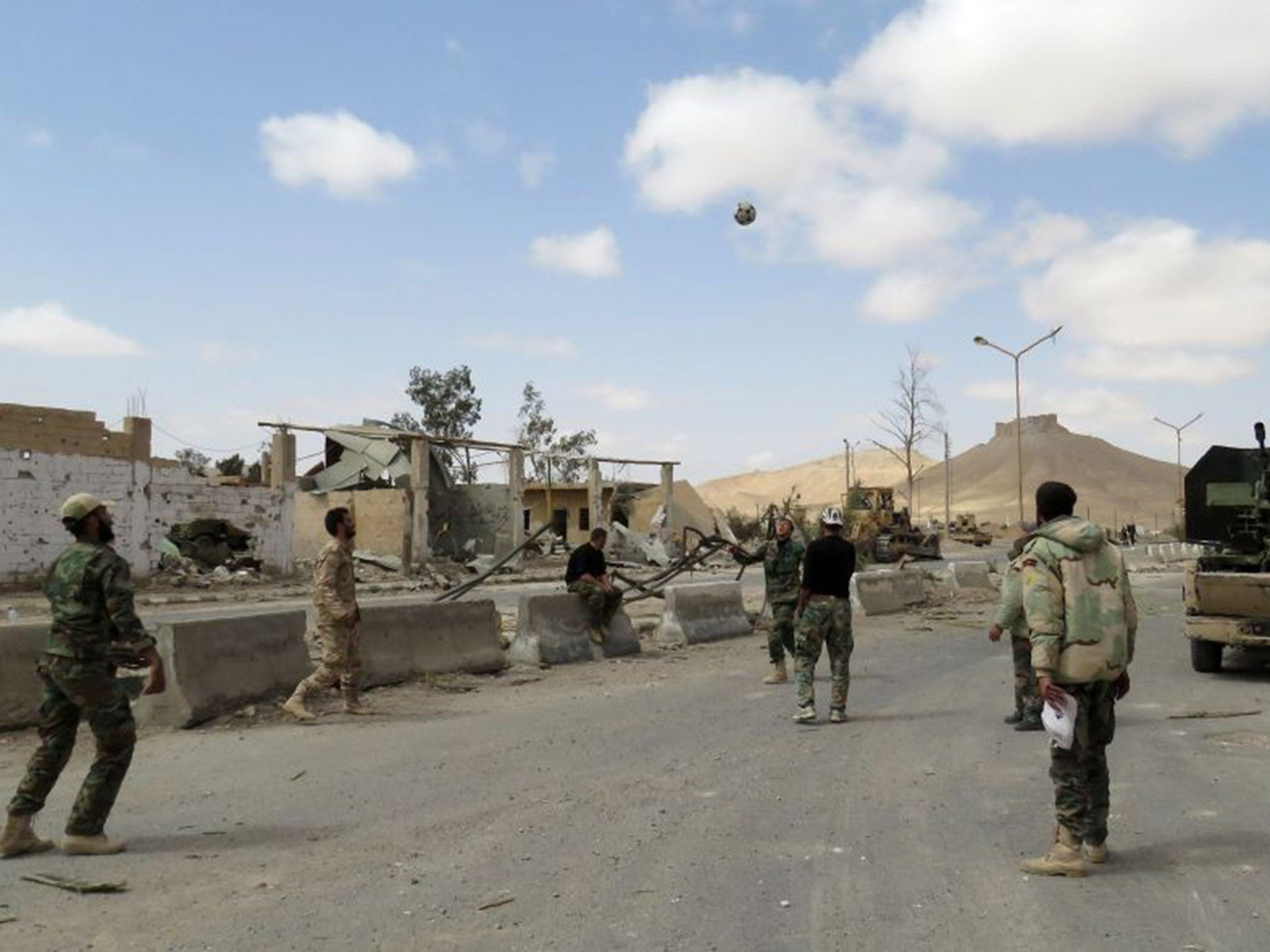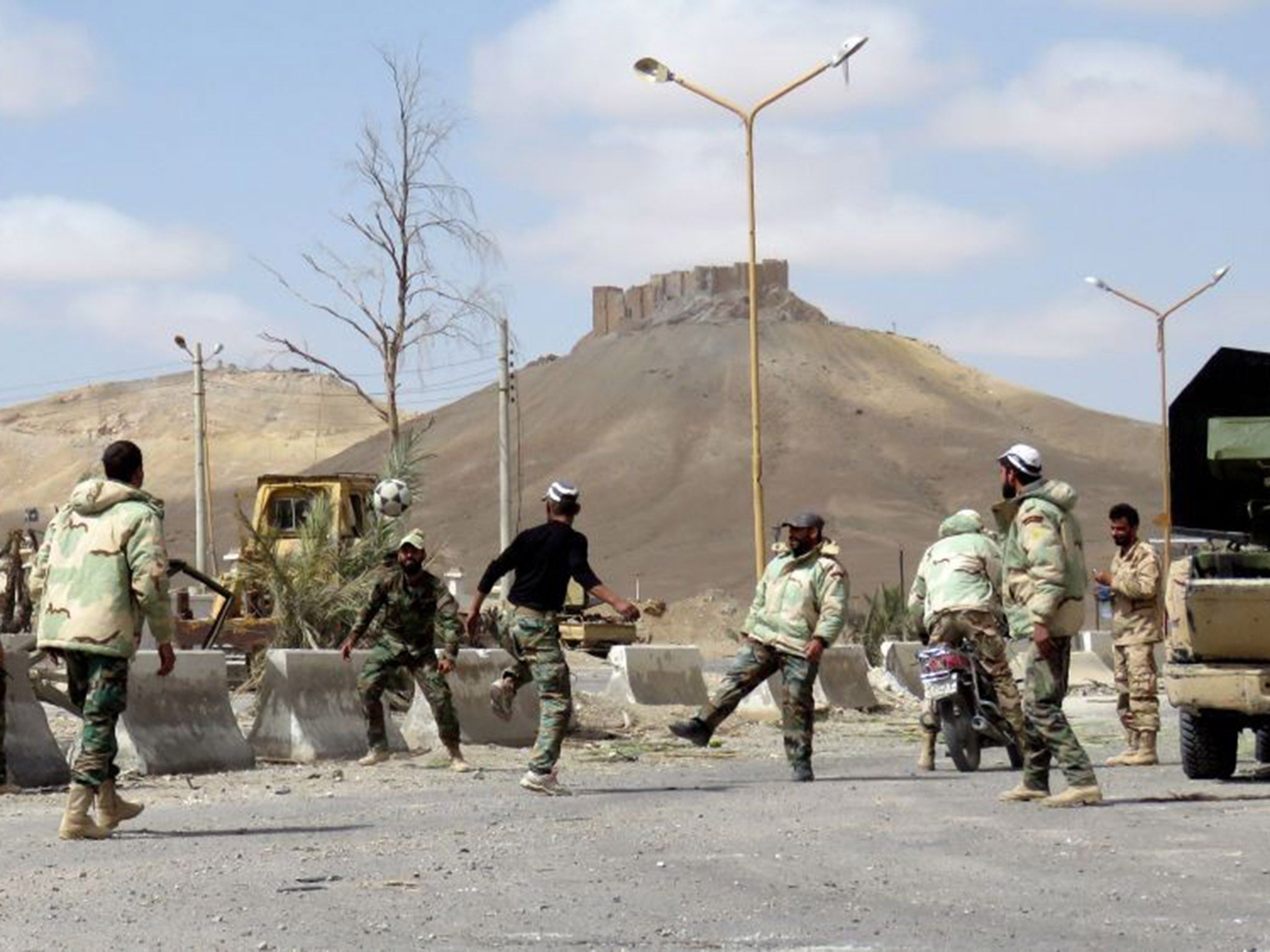Palmyra: Pictures show Syrian soldiers playing football in historic city's rubble
Pro-Assad troops celebrate taking back control of the historic city from Isis
Your support helps us to tell the story
From reproductive rights to climate change to Big Tech, The Independent is on the ground when the story is developing. Whether it's investigating the financials of Elon Musk's pro-Trump PAC or producing our latest documentary, 'The A Word', which shines a light on the American women fighting for reproductive rights, we know how important it is to parse out the facts from the messaging.
At such a critical moment in US history, we need reporters on the ground. Your donation allows us to keep sending journalists to speak to both sides of the story.
The Independent is trusted by Americans across the entire political spectrum. And unlike many other quality news outlets, we choose not to lock Americans out of our reporting and analysis with paywalls. We believe quality journalism should be available to everyone, paid for by those who can afford it.
Your support makes all the difference.Pictures have emerged of Syrian pro-government soldiers celebrating the recapture of the ancient city of Palmyra by playing football in the streets.
Still wearing their rifles on their shoulders and dressed in combat gear, Assad's troops stopped to play a game after forcing Isis out of the city after three weeks of intense fighting.
The army officially took "complete control" of the city on Sunday, backed by Lebanese Hezbollah militants and Russian air strikes in what was the biggest defeat for the terror group so far.

The Russian Kremlin called the recapture of the city "an important and historic victory" and said Moscow had restored the potential of the Syrian army.

Isis originally captured the city, which is an UNESCO World Heritage site, in May 2015 and reportedly forced its citizens to flee with it to the other territory it holds.
Over 400 Isis fighters were killed in the battle to recapture the city, according to Rami Abdulrahman, the director of the UK-based Syrian Observatory for Human Rights.

One of the first journalists to see the liberated city told BBC Radio 4: "It was like a city of ghosts, we did not see a single family in the town.
"It's not completely clear, but it's understood Isis forced the residents out of the town and forced them to flee with them."

Syria's antiquities chief, Maamoun Abulkarim, estimated 80 per cent of the historic ruins in the city remained intact - including the impressive Roman era ampitheatre that the terror group used to carry out their executions.
He said he had a team who were committed to painstakingly restoring the rest but warned it would take "five years".
Two of Palmyra’s most famous structures, including the 2,000-year-old Temple of Bel, have been almost completely destroyed.
The group also appears to have destroyed a dozen of the city’s best-preserved tower tombs, as well as the shrine of Baal Shamin.
Join our commenting forum
Join thought-provoking conversations, follow other Independent readers and see their replies
Comments